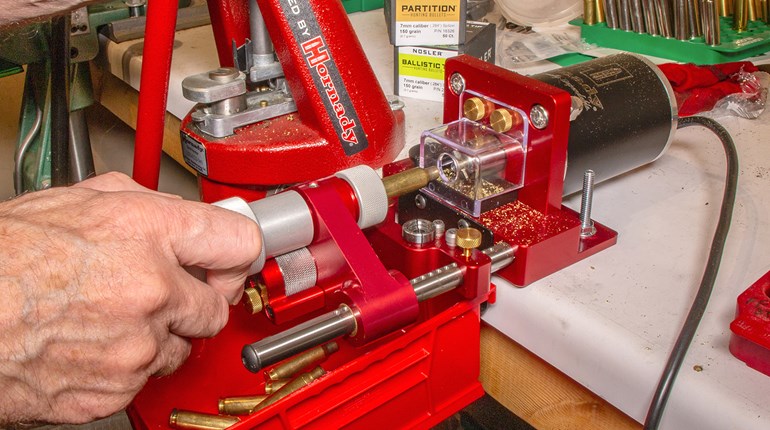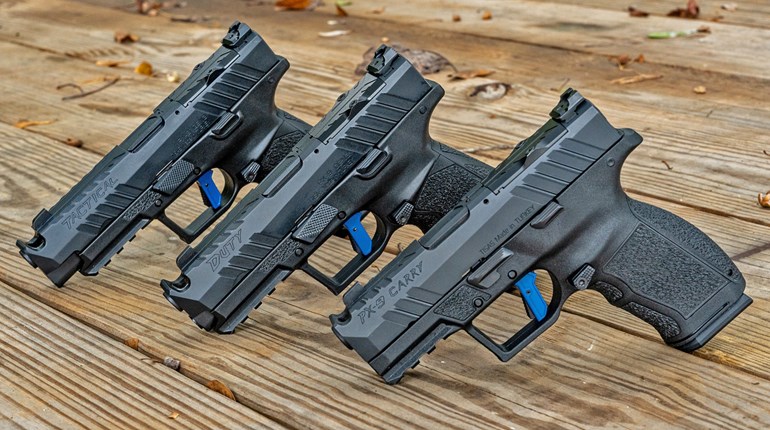
With law-enforcement agencies moving away from the .40 S&W and going back to the 9 mm, the .40’s future is cloudy. For those who don’t follow cartridge history closely, the .40 S&W is really nothing more than a 10 mm light load wearing a different dress. More than anything else, it is a compromise cartridge that attempts to balance the power of the .45 ACP with the capacity of the 9 mm. Interestingly, as the .40 S&W seems to be falling from grace, we’re seeing a revival of the cartridge that spawned its creation.
The 10 mm cartridge was introduced in 1983 for the now-defunct Bren Ten pistol. Though some credit Jeff Cooper as its inventor, he was more of an inspiration for both the cartridge and the gun. Where the cartridge really gained fame was with Colt’s introduction of the Delta Elite in 1987. Afterward, the 10 mm developed what I’d call a cult-like following, though it did see limited service with the FBI. Speaking of the FBI, I often reference its 1986 Miami shootout, but I do so with good reason. That incident was the impetus for more changes in the world of defensive handguns than any other single event. It directly led to the engineering of better performing defensive-handgun ammunition and gave us the .40 S&W.
Enough history. Let’s get back to the present and the 10 mm. Right now, it seems like every major handgun manufacturer realizes it must have a 10 mm in its lineup. And, with the rejuvenated interest in the 10 mm, we’re seeing some handguns chambered for it that probably shouldn’t be. I recently tested a 27-ounce compact pistol with a 3.8-inch barrel chambered for the 10 mm. Nothing—let me repeat that—nothing about shooting that handgun was enjoyable. Could I handle the recoil? Sure. Was it fun? No.
In a 27- or 28-ounce handgun, +P-level 9 mm ammunition will generate about 5 ft.-lbs. of recoil energy and +P-level .45 ACP loads can generate as much as 10. By comparison, many 10 mm loads will generate 13 or more ft.-lbs. of energy. In lightweight handguns, which are currently popular for concealed carry, 10 ft.-lbs. of recoil energy is not enjoyable to shoot. It also increases your split times—the time between shots during a sustained engagement—by about .1 second more than when using the .45 ACP and as much as .2 second more than the 9 mm. This is, of course, one reason the FBI abandoned the 10 mm for the .40 S&W about 30 years ago. The .40 S&W was easier to shoot fast and accurately.
What you’re probably wondering is, what advantage the power of the 10 mm might give you? I’ve been testing one of the new 5-inch-barreled 1911 D10 10 mm pistols from Tisas and managed to scrape up 10 different 10 mm loads to shoot through it. So, I thought it would be a good time to also test the performance of these loads and compare them to what many consider top-shelf 9 mm and .45 ACP loads. The results are detailed in the accompanying table, but before you dig into them, let me highlight some things.
Part of the appeal of the 10 mm is its suitability for defense against bears. Because of this, many loads for it use either hardcast or non-expanding, mono-metal bullets. Because of their light weight and limited penetration, the mono-metal bullets also have application for personal protection. Underwood Ammunition uses a lot of Lehigh Defense XD, Xtreme Penetrator and Xtreme Hunter bullets in the handgun loads it offers. The notion—supported by some empirical evidence—is that these non-deforming, mono-metal bullets with their slotted nose do indeed increase effectiveness when compared with FMJ bullets.
These lightweight mono-metal bullet loads can have fantastic velocities and limit the wrist twisting of the 10 mm, reducing the recoil to about .45 ACP levels. What you cannot see in the chart is the size of the fireball from the nearly 1,800 fps Lehigh Defense 115-grain load. At nearly the size of a beachball, when I fired the first round of this ammo, I thought the gun had blown up. Of course, that was not the case, but the muzzle blast will get your attention. I was using the chronograph inside and due to the shockwave this load produced, I had to move outside to get accurate readings.
The hardcast loads, on the other hand, penetrate extremely deep and are ideal for bear defense. To recover them after passing through 36 inches of Clear Ballistics, I had to use a panel of soft body armor behind the gel. Hardcast bullets generally show minimal or no upset, such as the 220-grain load from Buffalo Bore. However, the hardcast load from Underwood and the Solid Core load from Federal did slightly deform. This is probably due to their hardness, because all hardcast bullets are not created equal; they can vary from 11 up to 30 on the Brinell scale. However, with 36 inches of penetration, minimal bullet upset will not hinder their suitability for their intended purpose.
If you compare the conventional JHP 10 mm loads I tested to the top-tier 9 mm and .45 ACP loads at the end of the chart, you’ll see there’s not a tremendous amount of performance difference, at least in terms of penetration and bullet upset. The difference is not as staggering as you would expect from a cartridge that recoils 30 percent more than a .45, and twice as hard as a 9 mm. I think the standout here was the Hornady 135-grain Handgun Hunter load. It delivered good terminal performance, very consistent velocities, and just slightly more than 7 ft.-lbs. of recoil.
The real advantage the 10 mm has over the 9 and the 45 is in velocity and energy. However, the impact velocity and energy have on stopping a threat is something we cannot measure with any scientific certainty. We do know more velocity and energy are better—just as we know the .357 Mag. is better than the .38 Spl.—we just don’t know exactly how much. Given the elevated velocity and energy, combined with similar bullet upset and penetration, I think common sense would dictate that the 10 mm should be more effective at stopping a bad guy than a 9, .40 or .45. Common sense also tells us that given the same size handguns, the 10 mm is much harder to shoot well and a lot less fun to practice with. When all circumstances are considered, shootability might matter more than terminal performance.





































